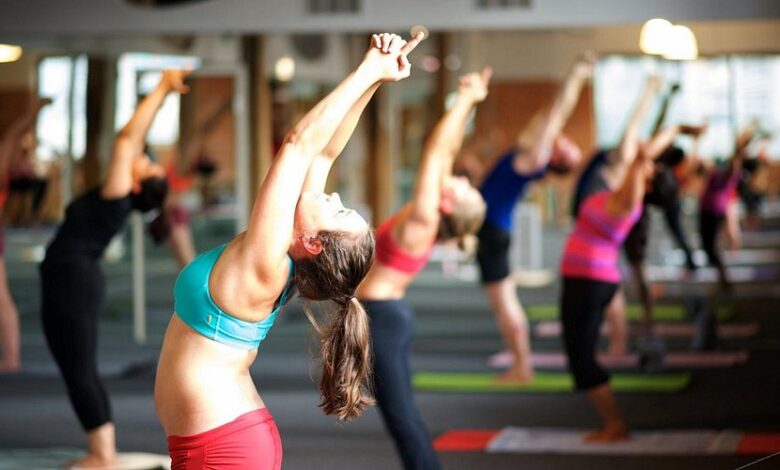How Technology Is Revolutionising Bikram Yoga: From Smart Studios to Wearable Insights

Introduction
In the modern wellness landscape, bikram yoga continues to evolve alongside digital innovation. What began as a fixed-sequence hot yoga practice has now integrated technology in ways that enhance performance tracking, studio management, and personal growth. In Singapore, where technology adoption is high and wellness culture is thriving, this fusion has created smarter studios, data-driven training, and more connected communities.
Technology’s role in Bikram Yoga is not about replacing tradition but about amplifying precision, safety, and engagement. From climate-controlled rooms to wearable sensors and digital coaching tools, every innovation serves to refine the practitioner’s experience while maintaining the spiritual core of the discipline.
The Rise of Tech-Enhanced Yoga Studios
Modern yoga studios are no longer just spaces for practice. They are data-aware, digitally synchronised environments designed to optimise comfort, consistency, and safety. Bikram Yoga, with its dependency on precise heat and humidity, benefits greatly from automation and digital control systems.
Examples of studio technologies include:
-
Smart thermostats and humidity sensors that maintain stable 40°C conditions with minimal fluctuation
-
Air filtration and ionisation systems that ensure air quality despite the heat
-
Energy-efficient infrared panels that warm the body directly rather than heating the air excessively
-
Automated check-ins and scheduling apps for seamless member experiences
These technologies help studios reduce operational costs, maintain consistency across classes, and enhance student comfort—making the practice more accessible to a wider audience.
Data-Driven Personal Practice: The Role of Wearables
Wearable technology has transformed how practitioners understand their bodies during Bikram Yoga sessions. Devices such as smartwatches, heart-rate monitors, and hydration sensors provide real-time feedback that allows yogis to fine-tune performance and prevent overexertion.
Key metrics wearables can track during hot yoga include:
-
Heart rate zones for endurance and recovery monitoring
-
Calorie expenditure and energy balance
-
Hydration levels and sweat rate estimation
-
Breathing rhythm and stress levels through HRV (Heart Rate Variability)
In Singapore, where fitness enthusiasts are accustomed to integrating data with daily habits, the use of wearables in Bikram Yoga offers a perfect blend of mindfulness and measurable progress.
Augmented Reality (AR) and Virtual Reality (VR) in Yoga Education
Bikram Yoga relies on precision—every posture, angle, and breathing sequence matters. AR and VR technologies are helping practitioners visualise posture alignment and instructors demonstrate corrections remotely.
Applications include:
-
AR posture overlays: Real-time guidance projected onto a mirror or screen to improve alignment
-
VR training for instructors: Simulation-based certification modules that replicate classroom dynamics
-
Immersive guided sessions: Virtual environments replicating the heat and sequence for home practitioners
These advancements make quality instruction more accessible, especially for international practitioners who may not have immediate access to certified studios.
The Science of Climate Control: Precision Heat Management
Maintaining the right temperature is the backbone of Bikram Yoga. Advances in smart climate control systems have revolutionised how studios manage heat distribution, air purity, and energy consumption.
Innovations shaping modern studios:
-
AI-based heating algorithms that adjust in real time based on body density and external weather
-
Smart ventilation that balances oxygen levels and prevents excessive humidity
-
Thermal zoning, where sensors ensure even heat distribution across the room
Such systems not only improve safety and comfort but also reduce operational costs, making Bikram Yoga more sustainable in the long run.
Biofeedback and Performance Analytics
The intersection of yoga and sports science has led to an exciting new field: biofeedback yoga. By integrating biometric sensors and data analytics, practitioners and instructors can now monitor subtle physiological changes during sessions.
Biofeedback applications include:
-
Monitoring stress hormone reduction through heart-rate analysis
-
Tracking muscular activation via electromyography (EMG) sensors
-
Evaluating recovery levels through sleep and hydration data
-
Personalised session recommendations based on fatigue scores
For professionals or athletes who integrate Bikram Yoga into their training, this data offers valuable insight into performance optimisation and recovery cycles.
Digital Communities and Online Integration
The modern Bikram Yoga ecosystem extends beyond studio walls. Social platforms, mobile apps, and streaming technologies have made it possible for practitioners to stay connected, learn, and share experiences globally.
Tech-driven community features:
-
Virtual classes that replicate the heat sequence experience using guided visuals and music
-
Social sharing platforms for progress tracking and accountability
-
AI-based chat assistants offering hydration and recovery tips
-
Reward systems integrated into apps for consistent attendance
Digital engagement enhances motivation, especially for those who struggle with consistency or travel frequently.
The Business Advantage of Technological Integration
For studio owners, adopting technology is not just about convenience—it is a competitive necessity. In Singapore’s fitness and wellness market, customers expect streamlined experiences.
Operational advantages of tech integration:
-
Automated billing and attendance tracking reduce administrative load
-
Energy monitoring software lowers utility expenses
-
CRM systems personalise offers and improve customer loyalty
-
Online analytics help forecast demand and optimise class scheduling
This combination of data and automation allows studios to provide a premium experience while maintaining efficiency and profitability.
Ethical Considerations and Data Privacy in Wellness Tech
With technology’s rise comes the responsibility to handle personal data ethically. Fitness trackers and digital yoga platforms collect sensitive health information, which must be safeguarded.
Best practices for ethical tech use:
-
Transparent consent for data collection and sharing
-
Anonymised analytics for performance tracking
-
Encrypted data storage and secure cloud systems
-
Clear communication about data usage in membership agreements
Studios that prioritise privacy build stronger trust among members, reinforcing their brand credibility.
Sustainability Through Smart Energy Systems
Singapore’s commitment to sustainability aligns perfectly with technology-driven Bikram Yoga operations. Heat-based studios consume significant energy, making smart management essential.
Sustainable innovations include:
-
Heat recycling systems that repurpose expelled warm air
-
Motion sensors that power down lights and heat zones when not in use
-
Solar integration for partial energy supply
-
Digital timers to limit unnecessary system run times
This integration of technology and environmental responsibility positions Bikram Yoga studios as models for sustainable wellness enterprises.
The Future of Bikram Yoga: Human Insight Meets Artificial Intelligence
Artificial Intelligence is shaping the future of wellness. In Bikram Yoga, AI can interpret data trends, predict recovery needs, and even suggest corrective measures for posture or hydration levels.
Possible AI applications include:
-
Automated class personalisation based on user profiles
-
Posture recognition through camera sensors for real-time feedback
-
Predictive analytics for injury prevention and fatigue management
-
AI-generated music and lighting adaptations to support focus and relaxation
As these technologies mature, they will complement the expertise of human instructors, enhancing precision without replacing the human connection that defines yoga.
How Practitioners Can Embrace Technology Mindfully
While technology can elevate practice, it should not overshadow yoga’s essence—awareness, breath, and mindfulness. Practitioners can use digital tools as companions rather than distractions.
Tips for mindful integration:
-
Use wearables to understand limits, not to compete
-
Practise occasional tech-free sessions for mental balance
-
Rely on digital data for reflection, not validation
-
Choose studios that integrate technology with intention and respect for tradition
Balancing innovation with mindfulness ensures that technology supports, rather than dominates, the personal journey.
The Singapore Context: A Perfect Convergence of Tech and Wellness
Singapore’s advanced digital infrastructure and wellness-conscious population create an ideal testing ground for tech-enhanced Bikram Yoga experiences. The blend of efficiency, discipline, and mindfulness mirrors the nation’s culture.
Studios such as Yoga Edition are perfectly positioned to harness these innovations while preserving the authenticity of practice. Their approach exemplifies how tradition and technology can coexist to offer a safer, more enriching, and sustainable form of hot yoga.
FAQ
Q1. How does technology improve safety during Bikram Yoga?
Smart sensors regulate temperature and humidity, preventing overheating. Wearables help track heart rate and hydration to ensure safe participation.
Q2. Are digital Bikram Yoga sessions as effective as studio classes?
They can be beneficial for maintaining consistency while travelling or at home, but in-studio practice offers better supervision, community energy, and heat accuracy.
Q3. Can wearables replace instructor feedback?
No. Technology provides data, but instructors interpret body alignment, emotional state, and overall energy flow—elements no device can fully replicate.
Q4. How are Singapore studios using technology differently from others?
Studios in Singapore prioritise precision climate control, digital booking systems, and sustainability. The country’s strong infrastructure enables seamless integration of energy-efficient and data-driven solutions.
Q5. Will Bikram Yoga continue evolving with new technologies?
Yes. Future advancements will include AI-assisted posture correction, biofeedback suits, and even personalised climate zones in studios, enhancing both safety and performance without compromising authenticity.
Technology has transformed Bikram Yoga from a static practice into a dynamic, data-informed discipline. By combining mindful tradition with modern innovation, practitioners and studios in Singapore are shaping the future of wellness—one intelligent breath and one measured pose at a time.




